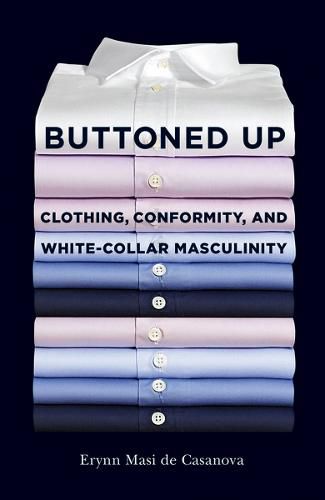Readings Newsletter
Become a Readings Member to make your shopping experience even easier.
Sign in or sign up for free!
You’re not far away from qualifying for FREE standard shipping within Australia
You’ve qualified for FREE standard shipping within Australia
The cart is loading…






Who is today’s white-collar man? The world of work has changed radically since The Man in the Gray Flannel Suit and other mid-twentieth-century investigations of corporate life and identity. Contemporary jobs are more precarious, casual Friday has become an institution, and telecommuting blurs the divide between workplace and home. Gender expectations have changed, too, with men’s bodies increasingly exposed in the media and scrutinized in everyday interactions. In Buttoned Up, based on interviews with dozens of men in three U.S. cities with distinct local dress cultures-New York, San Francisco, and Cincinnati-Erynn Masi de Casanova asks what it means to wear the white collar now. Despite the expansion of men’s fashion and grooming practices, the decrease in formal dress codes, and the relaxing of traditional ideas about masculinity, white-collar men feel constrained in their choices about how to embody professionalism. They strategically embrace conformity in clothing as a way of maintaining their gender and class privilege. Across categories of race, sexual orientation and occupation, men talk about blending in and looking the part as they aim to keep their jobs or pursue better ones. These white-collar workers’ accounts show that greater freedom in work dress codes can, ironically, increase men’s anxiety about getting it wrong and discourage them from experimenting with their dress and appearance.
$9.00 standard shipping within Australia
FREE standard shipping within Australia for orders over $100.00
Express & International shipping calculated at checkout
Who is today’s white-collar man? The world of work has changed radically since The Man in the Gray Flannel Suit and other mid-twentieth-century investigations of corporate life and identity. Contemporary jobs are more precarious, casual Friday has become an institution, and telecommuting blurs the divide between workplace and home. Gender expectations have changed, too, with men’s bodies increasingly exposed in the media and scrutinized in everyday interactions. In Buttoned Up, based on interviews with dozens of men in three U.S. cities with distinct local dress cultures-New York, San Francisco, and Cincinnati-Erynn Masi de Casanova asks what it means to wear the white collar now. Despite the expansion of men’s fashion and grooming practices, the decrease in formal dress codes, and the relaxing of traditional ideas about masculinity, white-collar men feel constrained in their choices about how to embody professionalism. They strategically embrace conformity in clothing as a way of maintaining their gender and class privilege. Across categories of race, sexual orientation and occupation, men talk about blending in and looking the part as they aim to keep their jobs or pursue better ones. These white-collar workers’ accounts show that greater freedom in work dress codes can, ironically, increase men’s anxiety about getting it wrong and discourage them from experimenting with their dress and appearance.